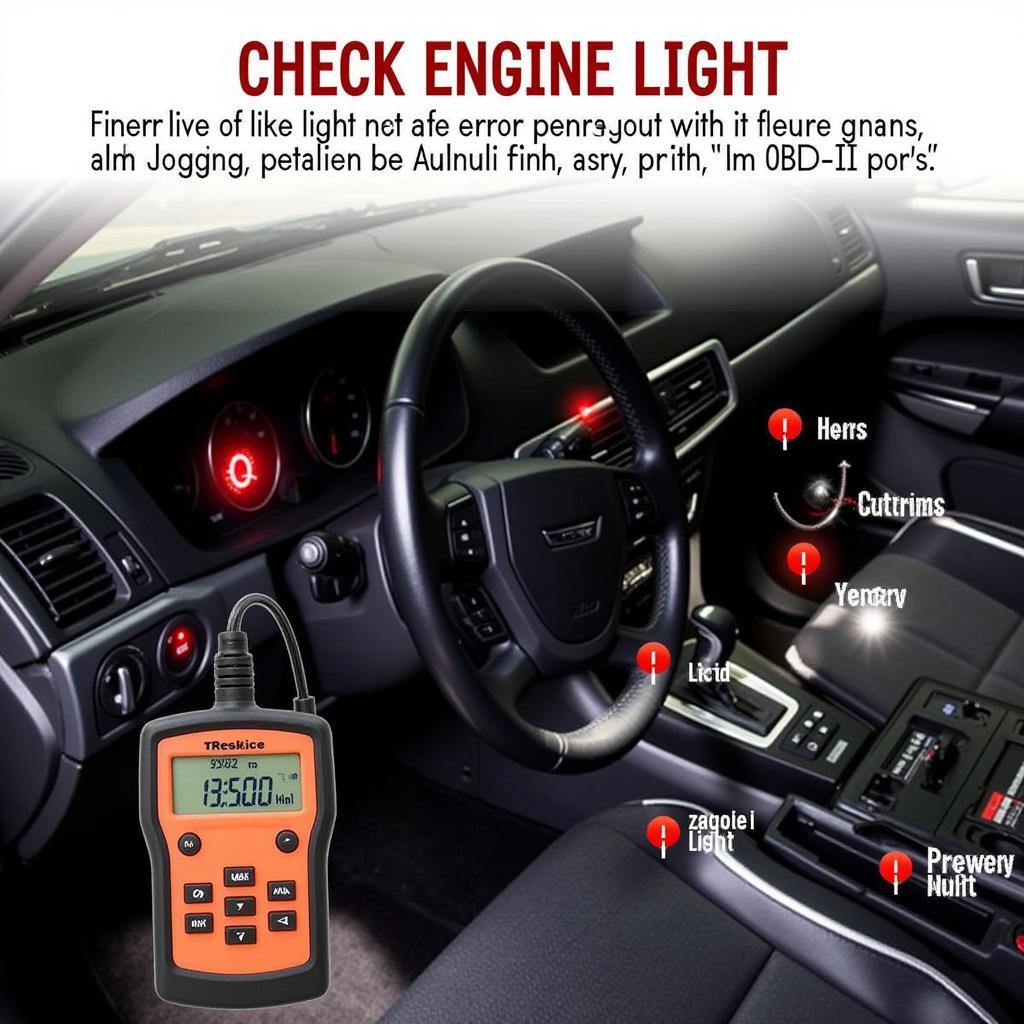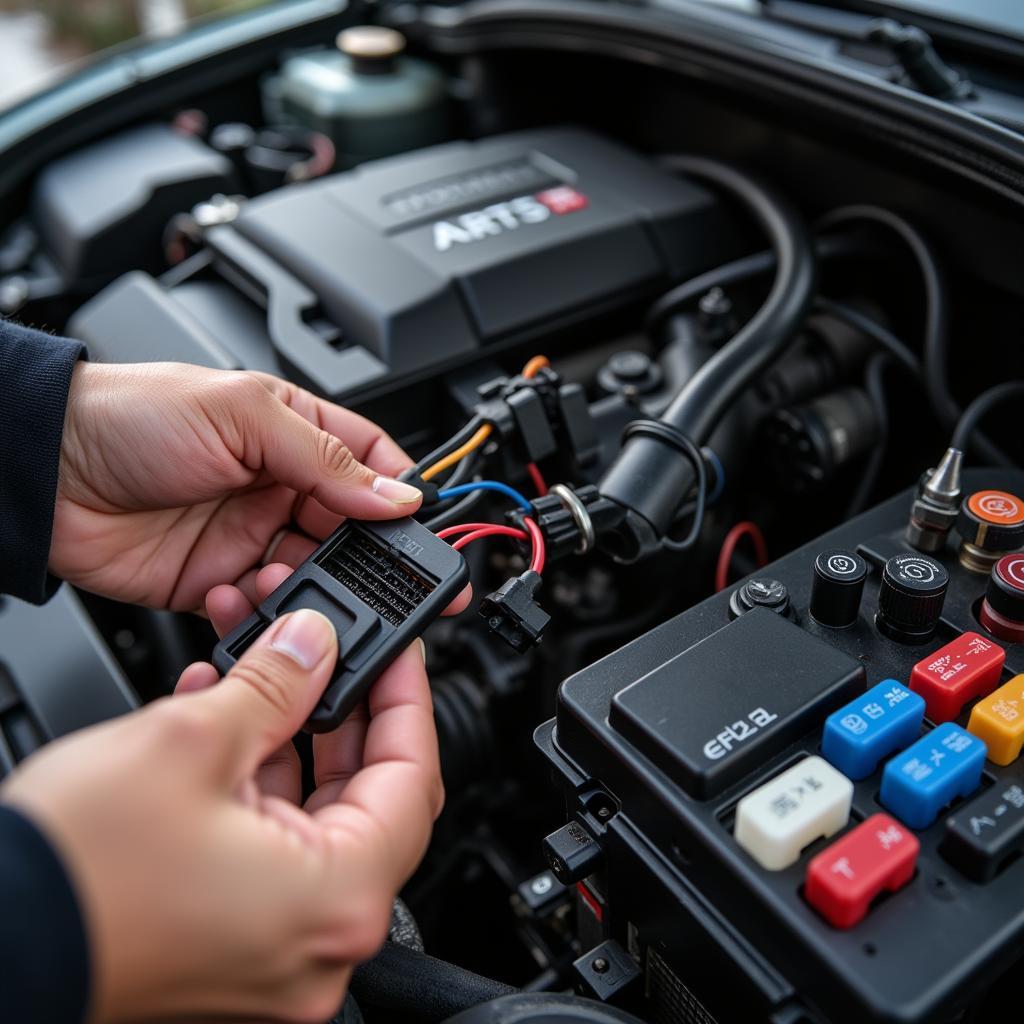An ECU problem can turn your smooth ride into a bumpy nightmare. If your car is acting up, chances are you’re dealing with what’s commonly called an “ECU problem.” But what exactly does that mean? This article dives deep into the world of automotive ECUs, helping you understand what they are, the problems they face, and how to tackle those issues, whether you’re a car owner, a mechanic, or an automotive technician.
Understanding the Automotive ECU
The Engine Control Unit (ECU), sometimes referred to as the Electronic Control Module (ECM) or Powertrain Control Module (PCM), is essentially the brain of your car’s engine and other crucial systems. It’s a sophisticated computer that monitors and controls a vast array of functions, from fuel injection and ignition timing to emissions control and transmission shifting. The ECU uses sensors throughout the vehicle to gather data, processes that information, and then sends commands to actuators to adjust various components and maintain optimal performance.
Why is the ECU So Important?
The ECU plays a vital role in modern vehicles, ensuring efficient engine operation, reduced emissions, and enhanced driving performance. Without a properly functioning ECU, your car could experience significant performance issues, decreased fuel efficiency, and even become undriveable.
Common ECU Problems Dealing With Cars
A malfunctioning ECU can manifest in various ways, often making it challenging to diagnose. Here are some of the most common ECU problems you might encounter:
- Check Engine Light: This is often the first and most obvious sign of an ECU issue.
- Poor Performance: The car might experience rough idling, stalling, hesitation, or lack of power.
- Reduced Fuel Efficiency: A faulty ECU can disrupt the fuel injection system, leading to increased fuel consumption.
- Transmission Problems: Issues with shifting gears, slipping, or harsh engagement can also be ECU-related.
- Starting Problems: The car might crank but not start, or it might be difficult to start in certain conditions.
- Intermittent Issues: Problems that come and go sporadically can be particularly frustrating and often point to an ECU malfunction.
 Common ECU Malfunction Symptoms
Common ECU Malfunction Symptoms
How to Diagnose an ECU Problem Dealing With Cars
Diagnosing an ECU problem requires a systematic approach. Here’s a step-by-step guide:
- Check the Check Engine Light: Retrieve the diagnostic trouble codes (DTCs) using an OBD-II scanner. These codes provide valuable clues about the nature of the problem.
- Visual Inspection: Carefully inspect the ECU for any signs of physical damage, corrosion, or loose connections.
- Check Wiring and Connectors: Examine the wiring harness and connectors for any damage, fraying, or corrosion.
- Test Sensors: Use a multimeter or other diagnostic tools to test the sensors that provide data to the ECU.
- ECU Testing: Specialized equipment can be used to test the ECU itself for internal faults.
Fixing ECU Problems: DIY vs. Professional Help
Some ECU problems, such as loose connections or corroded terminals, can be addressed by DIY enthusiasts. However, more complex issues often require the expertise of a qualified automotive technician.
When to Call a Professional
- Complex DTCs: If the diagnostic trouble codes point to internal ECU faults, it’s best to consult a professional.
- Specialized Equipment: ECU testing and reprogramming often require specialized tools and software.
- Safety Concerns: Working with the car’s electrical system can be dangerous if not handled properly.
 Mechanic Diagnosing ECU with Diagnostic Tool
Mechanic Diagnosing ECU with Diagnostic Tool
“A thorough diagnosis is crucial before jumping to conclusions about ECU problems,” says Johnathan Carter, Senior Automotive Engineer at Carter Automotive Solutions. “Many seemingly ECU-related issues can stem from simpler problems like faulty sensors or wiring.”
Preventing ECU Problems
While not all ECU problems are preventable, taking some proactive measures can significantly reduce the risk:
- Regular Maintenance: Following the manufacturer’s recommended maintenance schedule helps keep the entire electrical system in good condition.
- Protect from Moisture: Ensure the ECU and its connections are protected from moisture and corrosion.
- Avoid Jump Starting Incorrectly: Incorrect jump starting can damage the ECU and other sensitive electronic components.
 Car Maintenance for ECU Problem Prevention
Car Maintenance for ECU Problem Prevention
“Preventative maintenance is key to avoiding costly ECU repairs down the road,” advises Sarah Miller, Lead Technician at Miller Automotive Diagnostics. “Regular checks and cleaning can prevent minor issues from escalating into major headaches.”
Conclusion: Tackling Your ECU Problems Dealing With Cars
Understanding what an ECU problem entails is crucial for any car owner or automotive professional. By recognizing the symptoms, understanding the diagnostic process, and taking preventative measures, you can keep your car running smoothly and avoid costly repairs. Don’t hesitate to reach out to the experts at AutoTipPro for assistance with any ECU problems you may encounter. Contact us at +1 (641) 206-8880 or visit our office at 500 N St Mary’s St, San Antonio, TX 78205, United States.
 Modern Car ECU in Engine Bay
Modern Car ECU in Engine Bay
FAQ
- What does ECU stand for? ECU stands for Engine Control Unit.
- How much does it cost to replace an ECU? The cost varies depending on the make and model of the car, but it can range from a few hundred to several thousand dollars.
- Can I drive my car with a bad ECU? While it might be possible to drive short distances, it’s not recommended. A faulty ECU can lead to further damage and potentially dangerous driving conditions.
- How long does an ECU last? Generally, an ECU should last the lifespan of the vehicle, but it can fail prematurely due to various factors.
- Can a bad battery cause ECU problems? While a bad battery itself might not directly damage the ECU, improper jump starting or voltage fluctuations can.
- How do I reset my car’s ECU? Disconnecting the battery for a period can sometimes reset the ECU, but it’s best to consult a professional for proper procedures.
- What is the difference between an ECU and a PCM? The terms are often used interchangeably, but PCM (Powertrain Control Module) typically refers to a more comprehensive module that controls both the engine and the transmission.




Leave a Reply